There’s something so bright and fresh about a bowl of pasta loaded with garden veggies and a luscious, creamy sauce. This Quick Veggie Pasta Primavera Recipe hits all those notes—it's colorful, comforting, and comes together faster than you think. You’ll love how effortlessly it brings a little spring to your dinner table any night of the week.
Jump to:
Why You'll Love This Recipe
I’m genuinely excited to share this Quick Veggie Pasta Primavera Recipe because it strikes such a perfect balance between freshness and comfort. Every time I make it, I feel like I’m celebrating veggies in the best way possible—without spending hours in the kitchen.
- Speedy and Simple: It comes together in about 30 minutes, making it perfect for busy weeknights.
- Veggie-loaded: You get a vibrant mix of seasonal vegetables that stay crisp and flavorful.
- Creamy Yet Light: The sauce is silky with heavy cream but never feels heavy—just comforting.
- Customizable: You can easily swap in your favorite pasta shapes or veggies to suit your taste or pantry.
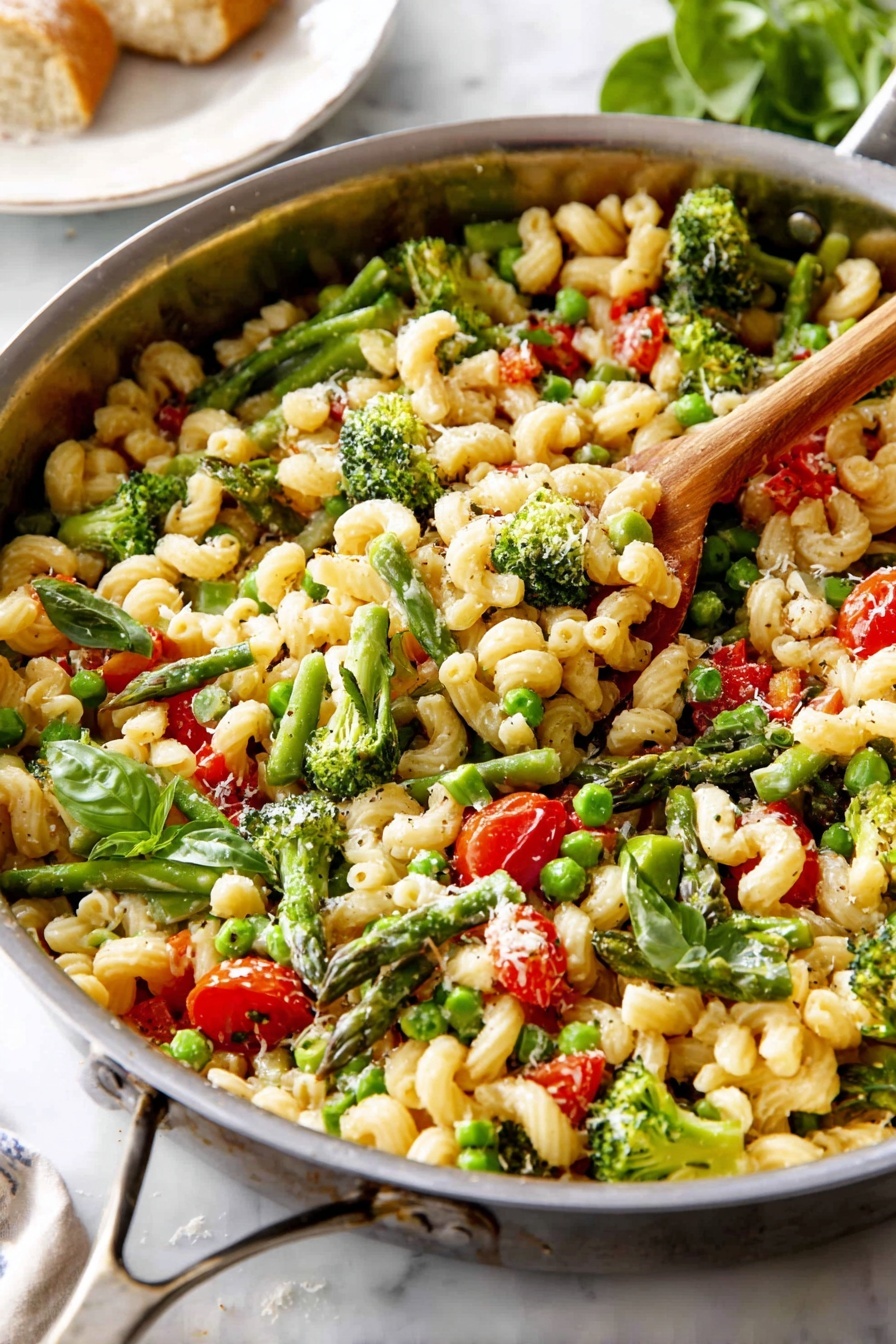
Ingredients & Why They Work
The magic of this Quick Veggie Pasta Primavera Recipe lies in the vibrant veggies paired with a creamy, herby sauce. Each ingredient adds its own texture and flavor, making this dish a true celebration of freshness. Here's a quick peek at why these ingredients shine.
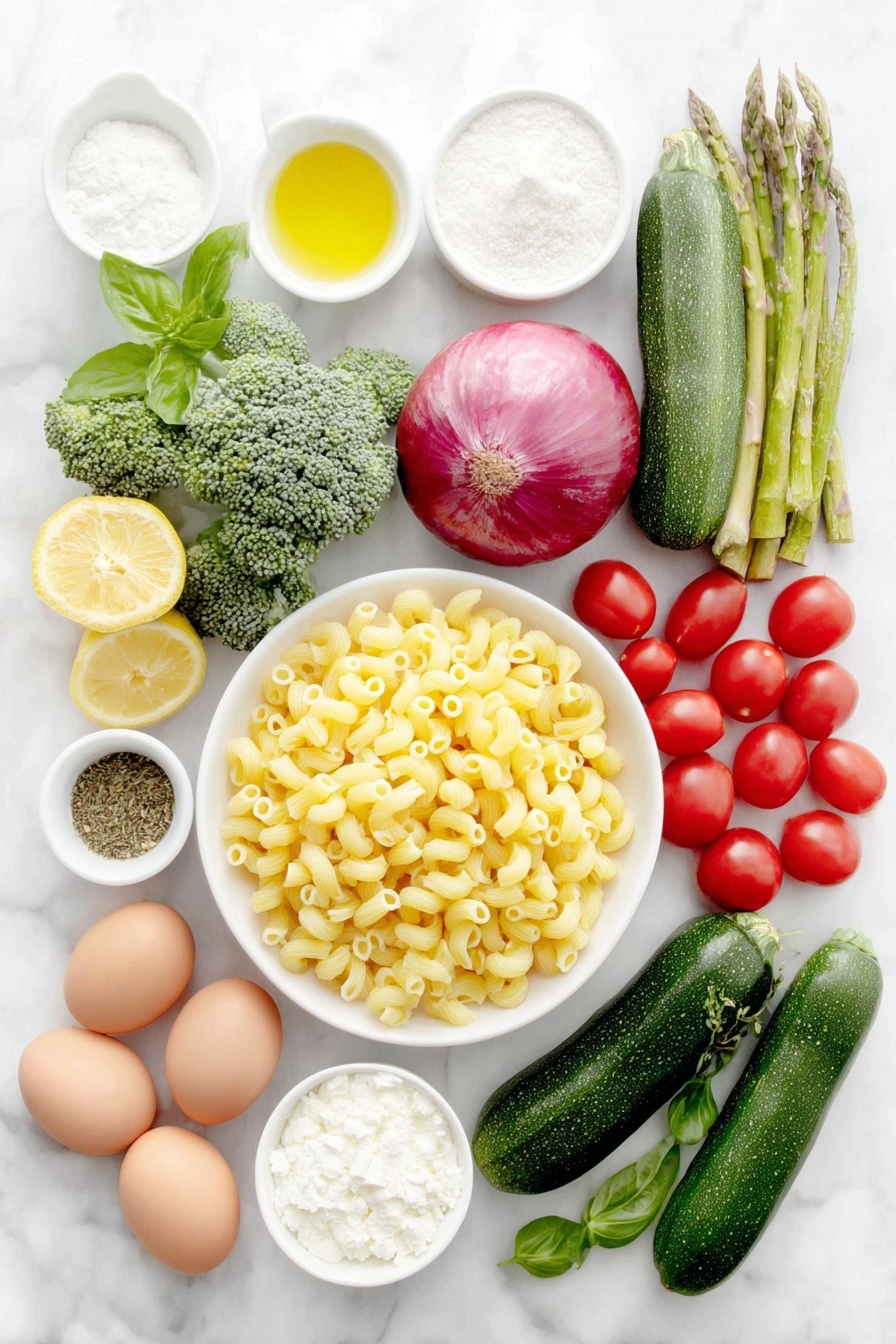
- Cavatappi or Short Pasta: The twists catch the sauce perfectly, and shorter shapes help everything hang together beautifully.
- Extra Virgin Olive Oil: Adds richness and helps soften the veggies without overpowering their natural flavors.
- Red Onion: Gives a sweet, sharp base flavor that cooks down just right.
- Broccoli Florets: Adds crunch and a fresh, slightly bitter balance.
- Yellow Squash & Zucchini: Both bring tender, mild sweetness and vibrant color.
- Asparagus: Delivers a green, grassy note that’s essential for primavera.
- Red Bell Pepper: Offers a pop of color and a gentle sweetness.
- Cherry Tomatoes: Burst with juiciness, brightening every bite.
- Garlic & Red Pepper Flakes: Provide that aromatic punch and a hint of heat.
- Heavy Cream & Chicken Broth: Combine to make the sauce creamy yet savory and light.
- Cornstarch: Helps thicken the sauce perfectly to coat the pasta and veggies.
- Herbs (Oregano, Parsley, Thyme): Bring earthy, aromatic layers.
- Lemon Juice: Adds a fresh, zesty brightness that lifts the whole dish.
- Parmesan Cheese: Melts into the sauce for that unmistakable savory, nutty flavor.
- Frozen Petite Peas: Little bursts of sweetness and texture that balance the dish.
- Fresh Basil: A fragrant finish that makes this dish sing.
Make It Your Way
I love tweaking the veggies based on what’s fresh or what I’ve got on hand—you should totally do the same. Don’t hesitate to swap out pasta shapes or add a little protein if you want. This recipe is like a blank canvas that’s quick to customize.
- Veggie Swaps: Once I subbed peas for fresh green beans and added mushrooms—it was a whole new but equally delicious vibe.
- Protein Boost: Adding grilled chicken or shrimp is easy and makes it more filling; just reduce the veggies or increase the sauce quantity to keep the balance right.
- Dairy-Free Variation: Try coconut milk or cashew cream instead of heavy cream—just keep the savory notes by boosting the herbs and a little nutritional yeast.
- Spice Level: If you like heat, I up the red pepper flakes or add a pinch of cayenne—you’ll love how it wakes up the flavors.
Step-by-Step: How I Make Quick Veggie Pasta Primavera Recipe
Step 1: Cook Pasta to Perfect Al Dente
Start by boiling salted water and cooking your pasta according to the package instructions—but here’s my pro tip: check it a couple of minutes before the suggested time. You want it just tender but still with a nice bite (al dente). Reserve about half a cup of that starchy pasta water before draining—it’s liquid gold for loosening up the sauce if it gets too thick.
Step 2: Sauté Vegetables Until Tender-Crisp
Heat most of your olive oil in a deep skillet or braiser over medium-high heat and toss in the onions and broccoli first. Give them a good 3 minutes to soften just enough but hold their crunch. Add the squash, zucchini, asparagus, bell pepper, and cherry tomatoes next, seasoning lightly with salt and pepper. Cook just 2 minutes more—you don’t want mushy veggies but vibrant, crisp-tender ones. Then transfer everything out to a bowl.
Step 3: Whip Up the Creamy Herb Sauce
In the same skillet, heat a little more olive oil, then quickly sauté garlic and red pepper flakes for about 30 seconds. Immediately add your heavy cream over low heat, whisk in the chicken broth mixed with cornstarch, and sprinkle your dried herbs and a pinch of salt. Stir gently until the sauce thickens, about 3 to 5 minutes. Stir in half of your Parmesan cheese and lemon juice for a silky tang. Don’t forget the peas and fresh basil—they add subtle pops of flavor gently warmed through.
Step 4: Bring It All Together
Now, fold the sautéed veggies back into the sauce, followed by the cooked pasta. If the sauce feels too thick, gradually add some of that reserved pasta water until you reach your ideal consistency. Give it a taste and adjust salt and pepper as needed. Serve it with an extra sprinkle of Parmesan for that irresistible finishing touch.
Top Tip
Over the years, I’ve learned a few tricks that make this Quick Veggie Pasta Primavera Recipe foolproof and absolutely delicious every time—especially when balancing the veggies and sauce perfectly.
- Timing the Veggies: Use a timer to avoid overcooking—tender crisp is the goal, not soft mushy veggies.
- Perfect Pasta Check: Taste the pasta early so it stays al dente and holds up well with the sauce and veggies.
- Fresh Parmesan Only: Pre-shredded cheese just doesn’t meld the same—grate fresh Parmesan for that melt-in-your-mouth richness.
- Sauce Consistency: Reserve pasta water and add it slowly if your sauce thickens too much; it helps everything coat the pasta perfectly.
How to Serve Quick Veggie Pasta Primavera Recipe
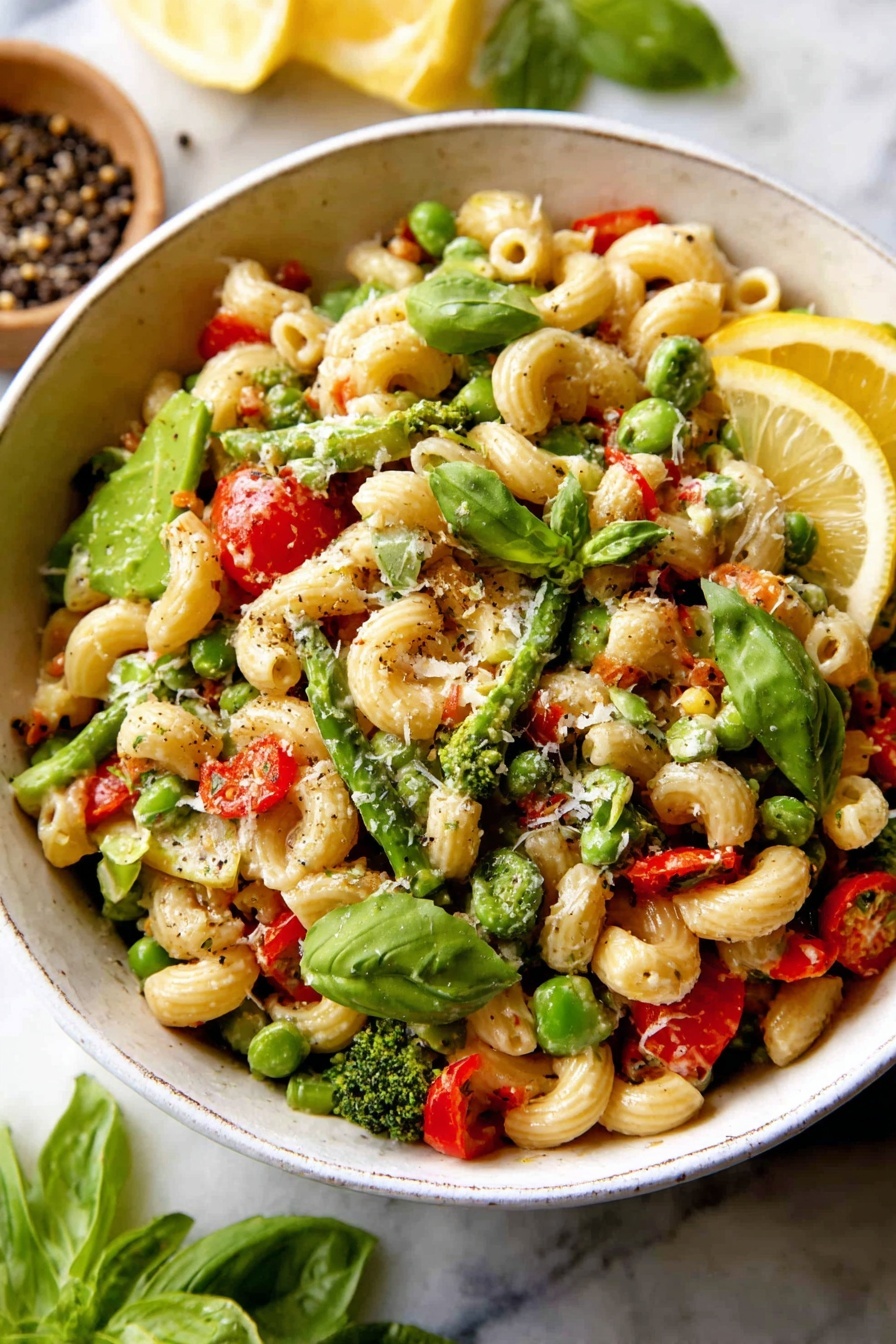
Garnishes
I always finish with a generous sprinkle of fresh basil and shaved Parmesan—it brightens the dish and gives it that restaurant-quality touch. Sometimes, a drizzle of good olive oil or a few lemon zest curls adds a lovely finish that guests always notice.
Side Dishes
A crisp green salad with a tangy vinaigrette pairs wonderfully, as do garlic breadsticks or a simple loaf of crusty bread to scoop up any leftover sauce. When I want something heartier, I’ll add a side of roasted mushrooms or a light antipasto platter for color and texture contrast.
Creative Ways to Present
For special occasions, I like serving this pasta primavera in individual wide bowls garnished with a sprig of basil and a lemon wedge on the side for an extra pop of color and freshness. It’s simple but makes the dish feel more elevated and festive. You can also toss in edible flowers for a whimsical touch!
Make Ahead and Storage
Storing Leftovers
I transfer leftovers into an airtight container and keep them in the fridge for up to five days. It reheats nicely without losing that fresh veggie crunch—just make sure your pasta is cooked al dente the first time around to avoid mushiness on reheating.
Freezing
While I haven’t frozen pasta primavera often myself because fresh veggies lose a bit of texture, it can be done. If you want to freeze, I recommend slightly undercooking the pasta and freezing the sauce and cooked veggies separately for best results.
Reheating
To reheat, microwave with a splash of milk or water to loosen the sauce, or warm gently on the stove over medium-low heat, stirring frequently. This keeps the sauce creamy and prevents the pasta from drying out.
Frequently Asked Questions:
Absolutely! This Quick Veggie Pasta Primavera Recipe is super flexible. Short pasta shapes like penne, fusilli, or orecchiette work especially well because they hold the sauce and catch the veggies nicely.
The key is to sauté the vegetables just until they are tender crisp—usually just a few minutes—and to time each veggie's cooking according to how quickly it softens. Using a timer really helps prevent overcooking, preserving their texture and vibrant color.
Yes! Swap the heavy cream for coconut milk or cashew cream and use nutritional yeast instead of Parmesan cheese. Adding plenty of fresh herbs helps keep the flavor rich and satisfying even without dairy.
Store leftovers in an airtight container in the fridge for up to five days. Reheat on the stove over medium-low heat with a splash of milk or water, stirring frequently, or microwave with a bit of liquid to regain that creamy texture and keep the veggies crisp.
Final Thoughts
This Quick Veggie Pasta Primavera Recipe has become one of my go-to dishes because it’s fast, nourishing, and endlessly versatile. It’s exactly the kind of meal I want to share with you—a simple, refreshing way to enjoy veggies at their best, no fuss required. Give it a shot and let me know how you customize it—I’m betting it’ll become a favorite in your kitchen too!
Print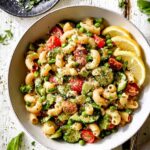
Quick Veggie Pasta Primavera Recipe
- Prep Time: 15 minutes
- Cook Time: 15 minutes
- Total Time: 30 minutes
- Yield: 6 servings
- Category: Main Course
- Method: Stovetop
- Cuisine: Italian
- Diet: Vegetarian
Description
This classic Pasta Primavera recipe brings together a colorful medley of fresh vegetables sautéed to tender crisp perfection, tossed with cavatappi pasta in a creamy, herb-infused Parmesan sauce. It’s a vibrant and comforting dish perfect for a quick weeknight meal or a delightful vegetarian dinner that celebrates the freshness of spring produce.
Ingredients
Pasta
- 12 oz. cavatappi or other short pasta such as penne, fusilli, or orecchiette
Vegetables
- ½ medium red onion chopped
- 2 cups broccoli florets cut into 1-inch pieces
- 1 medium yellow squash sliced and quartered
- 1 medium zucchini sliced and quartered
- 8 oz asparagus trimmed, cut into 1 ½-inch pieces
- 1 medium red bell pepper chopped
- 1 ½ cup cherry tomatoes halved
- 1 ½ cups frozen petite peas thawed
Sauce
- 4 tablespoons extra virgin olive oil divided
- 4 cloves garlic minced
- ¼ teaspoon red pepper flakes
- 1 cup heavy cream (may substitute evaporated milk)
- 1 ½ cups chicken broth
- 1 tablespoon cornstarch
- 1 ½ teaspoons dried oregano
- 1 ½ teaspoons dried parsley
- ½ teaspoon dried thyme
- 2 tablespoons lemon juice
- ¾ cup freshly grated Parmesan cheese divided
Seasonings
- Salt and pepper to taste
- ¼ cup fresh basil chopped
Instructions
- Cook pasta: Bring a large pot of salted water to a boil. Cook pasta according to package directions until al dente. Reserve ½ cup of pasta water before draining the pasta. Set pasta aside.
- Sauté vegetables: Heat 3 tablespoons olive oil in a large, deep saucepan or skillet over medium-high heat. Add chopped red onions and broccoli florets, sauté for 3 minutes until they start to soften.
- Add remaining vegetables: Add yellow squash, zucchini, asparagus, red bell pepper, and cherry tomatoes to the pan. Season with ¼ teaspoon salt and ¼ teaspoon pepper. Sauté for 2 minutes until all vegetables are tender-crisp. Transfer vegetables to a large bowl and set aside.
- Prepare sauce base: In the now empty skillet, heat 1 tablespoon olive oil over medium heat. Add minced garlic and red pepper flakes, sauté for 30 seconds until fragrant.
- Make cream sauce: Reduce heat to low and pour in heavy cream. In a separate bowl, whisk chicken broth with cornstarch until smooth, then add this mixture to the skillet. Stir in dried oregano, parsley, thyme, and ¼ teaspoon salt. Bring the sauce to a simmer and cook for 3-5 minutes until thickened.
- Finish sauce: Turn heat to low and stir in ½ cup grated Parmesan cheese until melted. Add lemon juice, thawed peas, and chopped fresh basil. Warm through gently.
- Combine pasta and vegetables with sauce: Add the sautéed vegetables back into the sauce, followed by the cooked pasta. Stir well, adding reserved pasta water a little at a time if needed to achieve desired sauce consistency. Taste and adjust seasoning with salt and freshly cracked pepper.
- Garnish and serve: Serve pasta primavera garnished with the remaining ¼ cup freshly grated Parmesan cheese and additional fresh basil if desired.
Notes
- Do not overcook the vegetables; they should remain tender-crisp to preserve texture and flavor.
- Test pasta 2-3 minutes before box timing to ensure it is al dente with a slight bite.
- Use a large enough pot or deep skillet to comfortably fit pasta and vegetables combined.
- Feel free to substitute or add a variety of vegetables for texture, color, and flavor balance.
- Use freshly grated Parmesan for best flavor and melting quality instead of pre-shredded cheese.
- You may cook the tomatoes more or less depending on your preference for softness or bursting.
- Lemon juice can be adjusted to taste for more or less citrus brightness.
- Leftovers store well in an airtight container in the refrigerator for up to five days.
- Reheat gently in microwave or on stove with a splash of milk or water to loosen sauce.
- To prep ahead, cook pasta al dente and toss with oil to prevent sticking, chop and store vegetables and aromatics separately, and grate cheese fresh before serving.
Nutrition
- Serving Size: 1 serving
- Calories: 420 kcal
- Sugar: 6 g
- Sodium: 450 mg
- Fat: 20 g
- Saturated Fat: 9 g
- Unsaturated Fat: 10 g
- Trans Fat: 0 g
- Carbohydrates: 45 g
- Fiber: 5 g
- Protein: 15 g
- Cholesterol: 55 mg

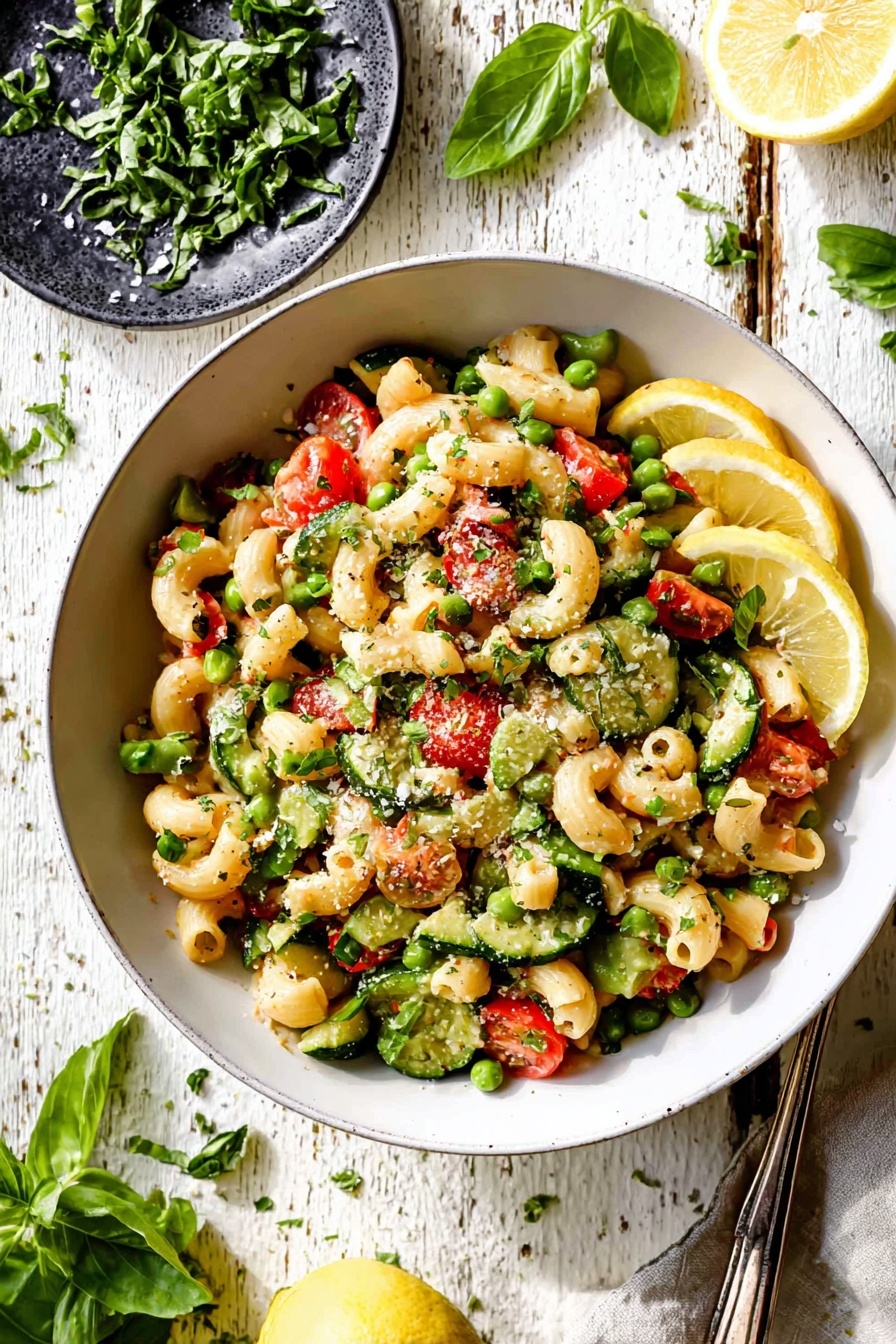
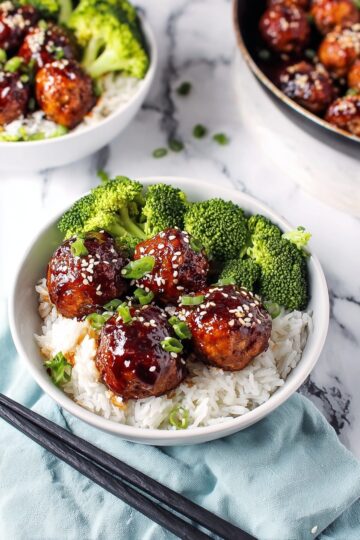



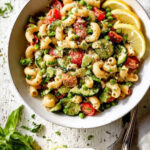
Leave a Reply